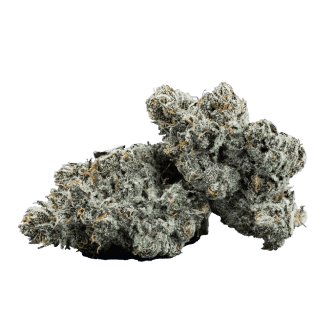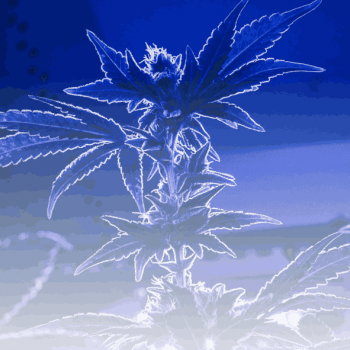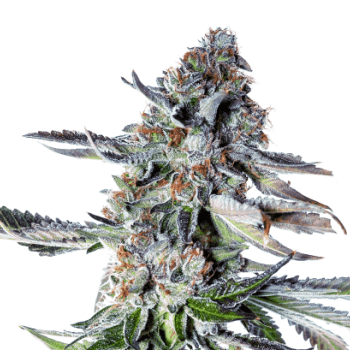

Cannabis Plant Anatomy Explained
Published: October 2, 2023
Imagine plants as bustling cities. Each part has a specific role, contributing to the community's overall functions. Just as every plant tells a unique story, cannabis plants captivate enthusiasts with their diverse anatomy. With over 700 strains, there's so much to discover.
Understanding the Cannabis Plant Anatomy
You don't have to be a skilled botanist to delve into the secrets of the cannabis plant. Anyone can unlock a deeper appreciation for this plant to explore and learn why it fascinates so many people that there is an annual festival in its honor, seeing tens of thousands of attendees.
Understanding how the different parts determine its growth, development, and potential can give you a deeper appreciation for its versatility. Take a look.

Female vs. Male Marijuana Plants
When it comes to cannabis, there are two main types of plants: female and male. Female marijuana plants produce the coveted buds, which contain the compounds responsible for the plant's various effects.
The female plant's buds are what you would look for when seeking a euphoric or relaxing experience. That may explain why female marijuana plants get the most attention in the cannabis world, contributing to the industry's $13.2 billion market value in 2022.
Cannabinoids, terpenes, and flavonoids are naturally occurring compounds in the plant. They contribute to cannabis's aroma, flavor, and effects. There are so many different strains and every single one has its own unique flavonoid combination.
Meanwhile, male marijuana plants produce pollen necessary for breeding and creating new strains. These may be more popular for breeders who study cannabis genetics to develop different strains.
Male marijuana plants produce pollen sacs that release pollen grains, which cultivators can control in their facilities. This way, they can deliberately introduce the grains and fertilize female flowers instead of having the wind carry them. Then, fertilization happens “seeds”.
Individual Cannabis Plant Anatomy Explained
Cannabis is like most other plants in terms of its parts. You would expect everything you normally would since it's a member of the plant kingdom. Every aspect has a unique role equivalent to a city sector. Here's a quick rundown of the most prominent parts of cannabis plants.

Flowers
The crown jewels of the cannabis plant — flowers — are where the magic happens. Many consider cannabis flowers, even as buds, the most valuable part of the plant as they burst with essential compounds, such as cannabidiol (CBD) and tetrahydrocannabinol (THC).
Cannabis flowers come in varied sizes, shapes, and colors, each with unique characteristics and effects. Experts carefully cultivate, harvest, and process flowers to create a myriad of cannabis products, such as Cloud Cover Cannabis flower pre-rolls.
In our city analogy, cannabis flowers or buds are like marketplaces or festivals. They are the main attraction and contain valuable commodities, giving the plant unique characteristics and effects.
Trichomes
On cannabis flower surfaces, you might notice tiny sparkling crystals. Those are trichomes, glandular structures responsible for producing cannabinoids and terpenes. It's a glimpse into the plant's chemical composition.
Cultivators create potent products such as Cloud Cover Cannabis concentrates using the trichomes. They use careful extraction methods to separate the crystals from the rest of the plant.
Trichomes can be thought of as the city's security guards. Apart from being the plant's compound production source, they also serve as its defense mechanism against predators, pests, and environmental stressors.
Leaves
Like every other plant, cannabis leaves play a crucial role in photosynthesis. Using chlorophyll, they harness the lights energy and convert it into vital nutrients and the plant's green pigment. Think of them as a city's solar panels.
Stems
Supporting the cannabis plant's structural integrity, stems act as its backbone, ensuring it stands tall. They're like a city's main highway system, connecting all the different neighborhoods.
These resilient structures transport water, nutrients, and sugars throughout the plant, enabling growth and development. Stems can also be a valuable resource for fiber production, contributing to the sustainable textile industry.
Roots
Hidden beneath the surface, the roots of the cannabis plant anchor it in the soil and absorb water and nutrients from the environment. Like a city with a functional underground infrastructure providing water and electricity to communities, a healthy root system is essential for the plant's overall growth and vitality.
Seeds
Cannabis plants produce seeds as a means of reproduction. Depending on the strain, these seeds contain the genetic information necessary for creating new plants and can vary in appearance, size, and color.
Think of cannabis seeds as the citizens. They are the city's future generations, carrying its legacy forward. Just as a good city produces good people, a good cannabis strains seeds have bred together so that they offer some of the best experiences.
Final Words
Exploring the anatomy of the cannabis plant reveals a fascinating world of diversity and potential. From different genders that play significant roles in the plant's propagation to individual plant parts that offer other valuable effects, having a deeper understanding of the plant can deepen your versatility.

Knowing which parts contain the compounds that you seek from cannabis products would also let you make more informed decisions when you visit a marijuana dispensary like High Profile Cannabis. Whether you're a novice or a seasoned enthusiast, please take a closer look at the cannabis plant's anatomy to enjoy its full potential.


